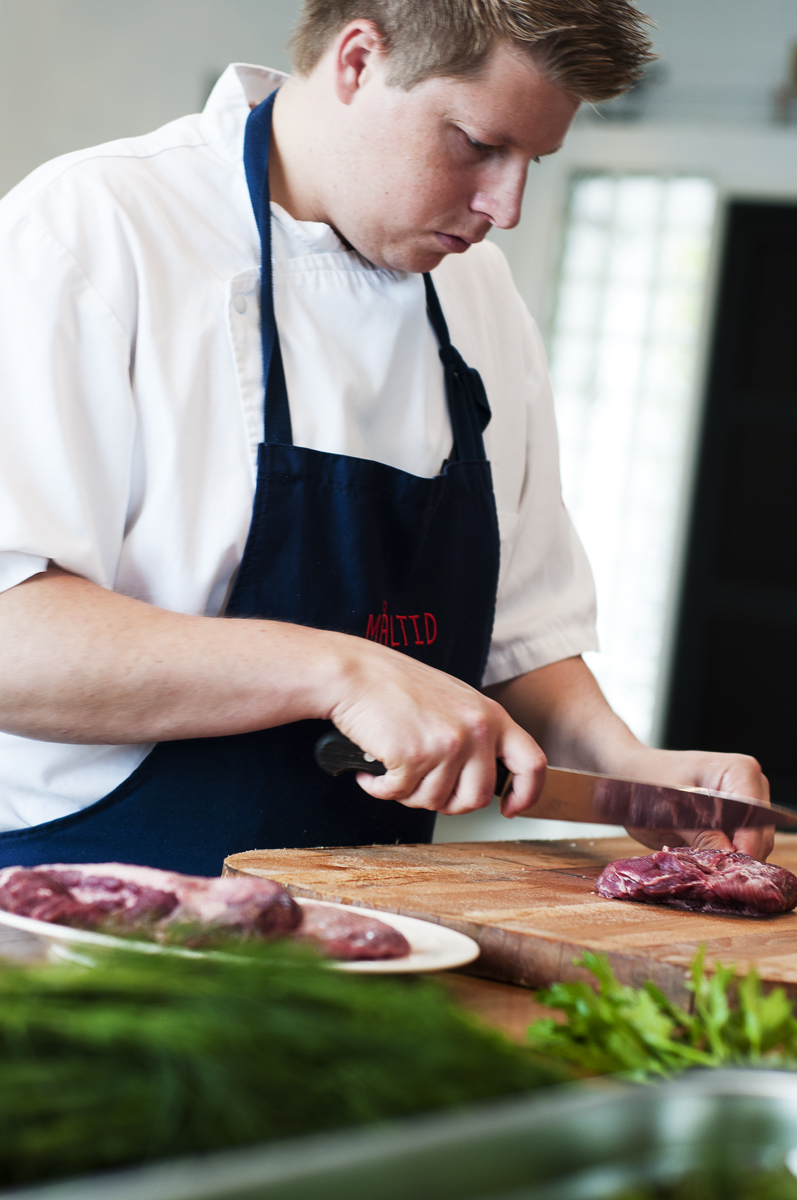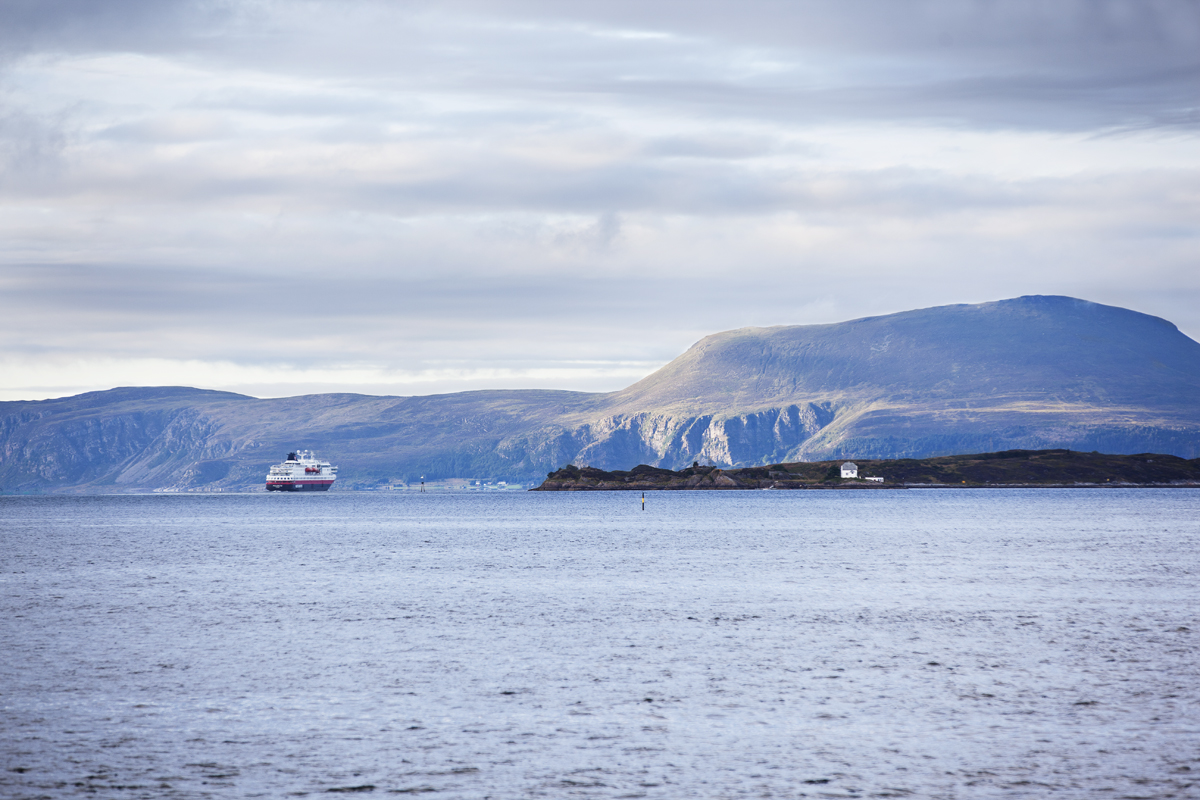Column
Meet Max Hansen
— Chef in Charge
The pop-up dinner organised in Ålesund was all about locally produced and seasonal food. Are you very commited to this subject?
I strongly believe in local food and use locally sourced ingredients on a daily basis in my kitchen. Also, I believe that the tomatoes from your backyard are the best in the world as you can pick them exactly when they are mature. Plus, you know how they were grown, and that they didn’t travel hundreds of miles to reach your table.
Your menus require a lot of harvesting, hunting and fishing: do you manage to do at least part of it?
Sure! That’s one of the best aspects of my job. I pick wild herbs, vegetables, berries, mushrooms and flowers, then I preserve them by salting, pickling and so on. This way I can serve, say, cranberries even when it’s snowing outside.
In addition to that, there are fishermen, hunters and other people involved in supplying my kitchen with everything we haven’t got time to forage ourselves.
Is it a challenge for Norwegian restaurants to include local products in their list of ingredients?
It is. It’s very difficult to cook and serve your own products. Restaurants trying to make something different, even simply looking back at our traditions, have to face many restrictions from Mattilsynet (the Norwegian Food Safety Authority).
But I think we should be allowed, for example, to rear our oxes here. Then we could cure their meat perfectly, instead of having it shipped all the way from Argentina. I mean, Argentinian meat is simply extraordinary, but why make the long trip here? Can’t we stop abusing the environment and have our own animals?
How would you describe the situation in Norway today?
It’s a thorny problem: Basically the Norwegian market is run by four huge companies which supply all the national stores. They mislead Norwegians into thinking that this is all good, but they are so powerful that they can almost write whatever they want on their food labels.
I am disgusted whenever I see these products in stores, but most of all when I see commercials on tv: So many lies about the actual ingredients, when at the end of the day it’s all filled with salt, artificial additives and water to charge more for less.
And I get even angrier with myself because sometimes I buy them too.
Let’s switch to a more positive topic: What’s your current project?
I can’t really reveal anything about it, except that I’m looking for an investor for a restaurant. Well, actually it’s not just one! I’d better say I have three projects: A top restaurant, a medium level one and a cheaper concept, but they all share the fundamental role of good raw materials and ingredients. No powder-food stuffed with additives in my kitchen!
Any particular favourite ingredient?
My favourite ingredient is good raw materials, like a perfect summer cabbage. What else would you need once you have some butter, garlic and shallots? Or oysters… It’s so simple with food. If it is good, it makes you feel good and you’ll talk about it for a long time, but most of all it makes people gather around a table, communicate and be social. I think Scandinavians lost the importance of this, but thankfully it’s returning. Or at least I hope so.
What is your background?
I came from a household where food was very important and, at the same time, the approach to it was very simple and straightforward. My family had a huge garden with vegetables, all kind of berries, and fruit trees. We grew our own salad and ate it fresh for months. We also had chicken and geese. I would pick eggs every morning. Sometimes we cut off their heads, picked the feathers and cooked them over an open fire.
We also traded eggs and all kinds of produce with our neighbours for meat, mostly pork and veal. We went to the mill to get flour for baking bread and pastry, and cereals for the poultry. Our place was also very close to the sea, so I spent many hours fishing, too.
Where did you get your inspiration from?
Nature. And my mother. She cooked us homemade warm meals every day, traditional Danish meals which inspired me a lot. She went through some difficult times when she and my father divorced, but she still served supper every evening at 6 o’clock – except for Sundays, officially her day off, even though she actually worked a lot then too.
Every morning, when my brothers and I got up, breakfast was ready and so was our packed lunch, but we could hardly close the lunchboxes, as mom prepared her “Smørrebrød” (traditional Danish open sandwiches) so high and huge! When everyone else in class had a piece of chocolate, we had salad, meat and various pickles.
I learnt a lot from her, also when it comes to staying strong during tough times and still keep sweet.
How about your professional growth?
I have been working in this business for twenty years, mostly in top restaurants, starting with the best crowd in Copenhagen. I learnt the basics of international cuisine at “Restaurationen” where I was taught how to make things work, to follow seasons and to taste and compare wine. I owe Lisbeth and Bo Jacobsen a lot, and also Niels Monberg – plus we got a Michelin star while I was there as an apprentice. Then I worked at “Kommandanten” and we made history by becoming the first two Michelin-starred restaurant in Denmark.
Twelve years ago I moved to Norway, where among others I have been in charge of “Haga Restaurant”, the first Michelin star ever outside Oslo, and more recently of Måltid, in Kristiansand, a restaurant that is now rated among the top 100 in the Nordic countries.
What happens when you arrive in a new restaurant?
I always try to bring stability to the plates going to the tables, which means introducing improvements both to the quality and the aesthetics of meals. When I see potential, I try to inspire the staff and push them to dare more. The beginning feels a bit hard, because it’s challenging and people tend not to like changes, but my colleagues understand my aims and are happy to get involved. From my experience it takes from two to four months to see the results, but they are worth the wait.
At Måltid I could prove that making a top restaurant in Norway (outside Oslo) is possible simply by undergoing small changes. It took three stages: First we tested the staff since who had been there since the beginning and took them as far as we could with training. Then we recruited some new people and made minor improvements without making it too fancy. Finally we introduced some changes to the menu and the kitchen staff. I think that foodwise Måltid is now one of the top three destinations in Norway.
Do you enjoy what you do?
By all means, I am a happy guy with two wonderful daughters and a job I love. Actually I work a lot, but whenever I can I go play soccer with some friends. I spend my spare time alone in the forest, looking for fresh air and clearing my mind. I have so many ideas and projects it’s sometimes overwhelming, so I must try and prevent myself from doing too much.
But then again, at the end of the day, what is better than sharing a great meal with good friends and family? I like nothing more than gathering my loved ones around a table.
Ok, then, a last one: Make a wish!
The most important people in the world are kids and students. If we can inspire them, making them understand the significance of social and health aspects related to cooking, then we really have created something. Something important.
Photos: Christoffer Johannesen
Text: Valentina Bertoldo




